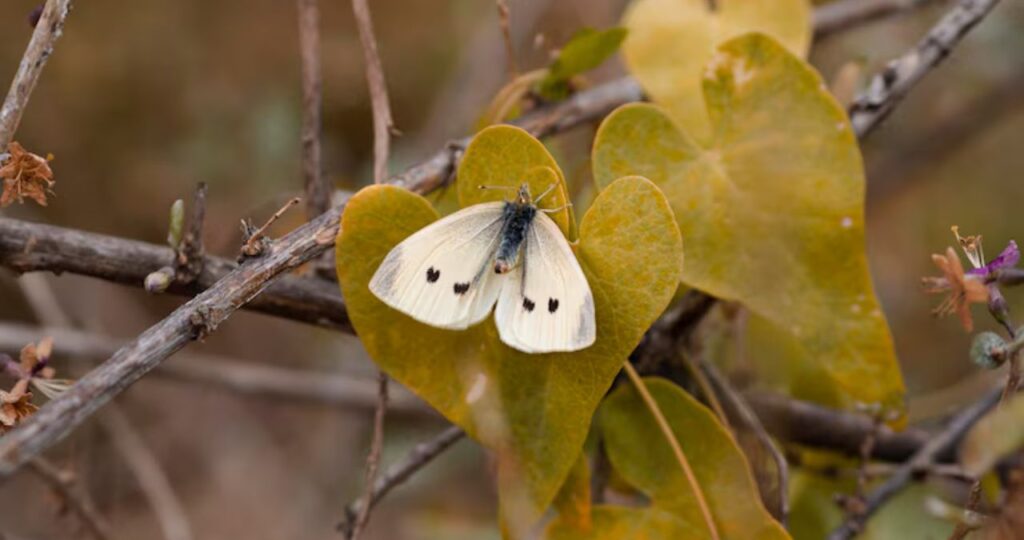When we think of charismatic insects, butterflies often steal the limelight with their vivid colors and delicate flutter. Yet, nestled within the nocturnal world of moths lies a genus that intrigues lepidopterists and naturalists alike—Autoba, a group of moths in the family Erebidae. Although not as widely recognized as some of their butterfly cousins, Autoba moths are a testament to nature’s ingenuity, diversity, and complexity.
This article delves deep into the Autoba genus, exploring its taxonomy, morphological features, behavioral traits, ecological significance, evolutionary relationships, and the ongoing scientific research that continues to shed light on these remarkable nocturnal insects. Whether you’re an entomologist, a nature enthusiast, or simply curious about the unseen intricacies of the natural world, this journey through the Autoba genus offers a fascinating glimpse into the hidden corners of biodiversity.
1. Introduction to the Erebidae Family
To understand Autoba, it’s essential to first appreciate the family it belongs to: Erebidae, one of the largest families in the order Lepidoptera. Erebidae includes a vast array of moths—some brightly colored, others cryptic; some minute, others massive. This family was previously considered part of Noctuidae but has since been recognized as distinct based on morphological and molecular studies.
Erebidae includes notable subfamilies like Arctiinae (tiger moths), Lymantriinae (tussock moths), and Boletobiinae, the latter of which houses Autoba. Many erebid moths are ecologically important, serving as pollinators, herbivores, and prey in complex food webs. Their diversity in form and function makes them ideal subjects for studies in evolution, ecology, and behavior.
2. Taxonomy and Classification of Autoba
The genus Autoba was first described by entomologists in the 19th century, with its classification undergoing revisions as new techniques and data emerged.
Taxonomic Hierarchy
-
Kingdom: Animalia
-
Phylum: Arthropoda
-
Class: Insecta
-
Order: Lepidoptera
-
Family: Erebidae
-
Subfamily: Boletobiinae
-
Genus: Autoba
The genus comprises several species, some of the most recognized being:
-
Autoba abrupta
-
Autoba angulifera
-
Autoba costimacula
-
Autoba olivacea
-
Autoba versicolor
The exact number of species under Autoba varies based on taxonomic revisions, but there are at least 25 documented species globally.
3. Morphological Characteristics
Autoba moths, though small to medium in size, display intricate and variable patterns that aid in camouflage and predator avoidance. While each species has its distinct traits, several morphological features unite them under the Autoba genus.
General Features
-
Wingspan: Typically between 15mm and 35mm.
-
Forewings: Triangular with various cryptic patterns; often possess wavy lines and subtle mottling.
-
Hindwings: Usually paler with reduced patterning.
-
Coloration: Shades range from earthy browns and grays to muted greens and ochres, helping them blend into bark, leaves, or lichen.
-
Antennae: Filiform (thread-like) in both sexes, although some males show slight bipectination for sensing pheromones.
Larval Features
Caterpillars of Autoba species are often slender, smooth-bodied, and cryptically colored, making them challenging to spot on their host plants. Their setae (hairs) are typically sparse, and their movement is slow and deliberate, a likely adaptation to evade predators.
4. Geographic Distribution and Habitat
Autoba moths have a wide geographical distribution, primarily found in:
-
Africa: Several species are endemic to sub-Saharan ecosystems.
-
South and Southeast Asia: Particularly India, Sri Lanka, and parts of Indonesia.
-
Oceania: Some species occur in tropical island ecosystems.
-
Australasia: Scattered records in northern Australia and surrounding regions.
Preferred Habitats
Autoba moths are highly adaptable and have been recorded in:
-
Tropical rainforests
-
Dry deciduous woodlands
-
Shrublands
-
Grasslands
-
Human-altered environments like gardens and farmlands
These moths tend to be nocturnal and are attracted to artificial lights, often appearing in light traps used by researchers and hobbyists.
5. Life Cycle and Behavior
Like most moths, Autoba species undergo complete metamorphosis, cycling through egg, larva (caterpillar), pupa (chrysalis), and adult stages.
Egg Stage
-
Eggs are laid singly or in small clusters on the underside of leaves.
-
Incubation period ranges from a few days to a week depending on temperature and humidity.
Larval Stage
-
Caterpillars feed on specific host plants (herbaceous or woody species).
-
They pass through several instars (molting stages) as they grow.
-
Some species have been observed displaying mimicry or cryptic coloration to evade predators.
Pupal Stage
-
Pupation occurs in leaf litter or within soil.
-
The pupa may be enclosed in a silken cocoon, offering protection from parasites and environmental hazards.
Adult Behavior
-
Primarily nocturnal and strongly phototactic (attracted to light).
-
Adults typically feed on nectar but are also drawn to fermenting fruit or sap flows.
-
Mating is usually initiated by pheromonal communication, with males flying to pheromone-releasing females.
6. Host Plants and Feeding Habits
Host plant specificity in Autoba caterpillars varies across species. Some are polyphagous, feeding on a wide range of plants, while others are monophagous, restricted to a single plant genus or species.
Common Host Plants
-
Ficus (figs)
-
Morus (mulberries)
-
Ipomoea (morning glories)
-
Cassia and Senna
-
Grasses and sedges
This feeding behavior makes Autoba species both ecologically significant and, at times, minor pests in agricultural or ornamental settings.
7. Ecological Roles and Significance
Despite their small size, Autoba moths contribute to ecosystems in multiple vital ways:
Pollination
-
Although less efficient than butterflies or bees, some adult Autoba moths visit flowers at night, inadvertently aiding in pollination.
Herbivory
-
Caterpillars influence plant dynamics through selective feeding, potentially shaping vegetation structure in their habitats.
Prey
-
Serve as a key food source for bats, birds, spiders, and predatory insects.
-
Caterpillars are often parasitized by wasps and flies, making them integral to parasitic food chains.
Bioindicators
-
Due to their sensitivity to light pollution and habitat disturbance, changes in Autoba populations can signal broader ecological shifts.
8. Evolutionary Insights and Phylogenetic Position
Modern genetic sequencing has allowed for more accurate placement of Autoba within the vast tree of Lepidoptera.
Phylogenetic Relationships
-
Autoba falls under the subfamily Boletobiinae, a group characterized by small to medium-sized moths with cryptic wing patterns.
-
Closely related genera include Catephia, Polypogon, and Hypena.
-
Mitochondrial DNA and nuclear gene analysis support Autoba as a monophyletic group (sharing a common ancestor), although its internal taxonomy remains under study.
Adaptations
-
Wing patterns and resting postures help camouflage Autoba moths, an evolutionary strategy honed over millennia to evade visual predators.
-
Pheromonal communication and thermal sensing adaptations aid in nocturnal navigation and mate location.
9. Conservation Status and Threats
As with many insect groups, comprehensive conservation assessments for Autoba species are limited. However, there are growing concerns.
Key Threats
-
Habitat loss: Deforestation, agriculture, and urbanization reduce suitable breeding and feeding grounds.
-
Light pollution: Alters mating behavior and predator-prey dynamics.
-
Pesticides: Widespread chemical use in agriculture may unintentionally target non-pest moths.
-
Climate change: Alters seasonal patterns, disrupting life cycles and migration cues.
While no Autoba species are currently listed on the IUCN Red List, the broader insect decline trends suggest proactive monitoring is warranted.
10. Research and Scientific Interest
Autoba moths have piqued the interest of several scientific disciplines.
Entomology
-
Studies on wing pattern formation and camouflage techniques.
-
Use in biodiversity surveys and faunal inventories.
Ecology
-
Role in nocturnal pollination networks.
-
Impact of light pollution and habitat fragmentation.
Biochemistry
-
Investigation of larval chemical defenses and pheromonal compounds.
Citizen Science
-
Platforms like iNaturalist and BugGuide have enabled amateur lepidopterists to contribute sightings and photos, enriching species databases and distribution records.
11. Cultural and Educational Relevance
Moths are often underrepresented in public education and conservation narratives. However, initiatives are emerging to change that.
Educational Outreach
-
Museums and natural history centers now include moths like Autoba in nighttime “moth nights.”
-
School curricula in some countries use moths as a gateway to teach life cycles, adaptation, and biodiversity.
Art and Culture
-
Moths are increasingly featured in art and literature as symbols of transformation and the mysteries of the night.
By elevating the Autoba genus, we foster greater appreciation for the complexity of nature, even in its smallest, most elusive forms.
12. Conclusion: A Window into Nature’s Nocturnal Wonders
The genus Autoba may not dazzle with flamboyant colors or iconic fame, but its ecological importance, evolutionary sophistication, and quiet beauty make it a genus worth celebrating. From the microstructures of its wing scales to the subtle intricacies of its larval feeding habits, Autoba exemplifies the wonders waiting to be discovered in nature’s overlooked corners.
As we grapple with global biodiversity loss and environmental challenges, understanding and protecting groups like Autoba isn’t just about saving moths—it’s about preserving the intricate tapestry of life that sustains ecosystems, cultures, and human well-being.
In learning about Autoba, we are reminded that every species, no matter how small or obscure, plays a part in the great ecological symphony of our planet.







